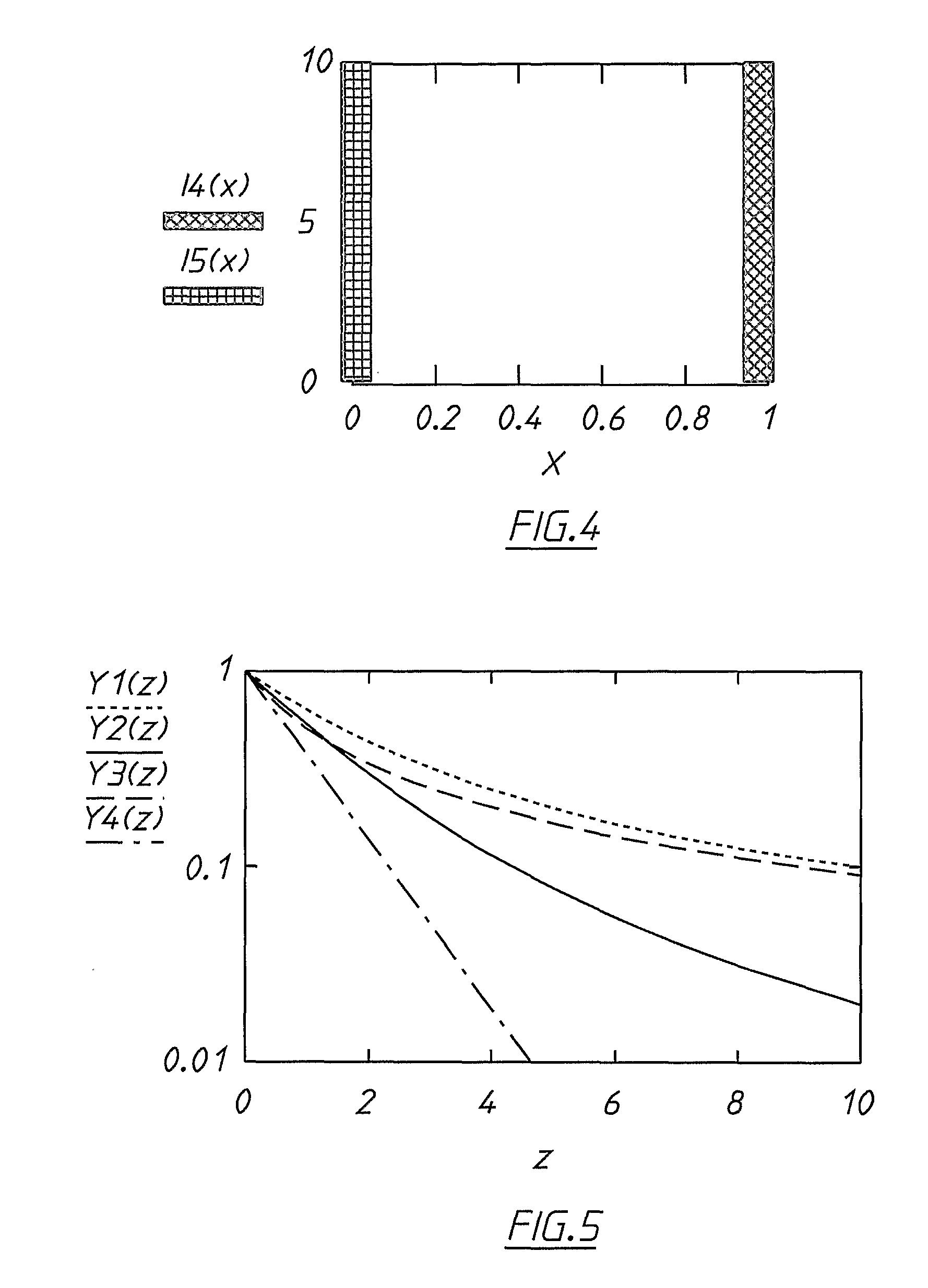Measurement of hydraulic conductivity using a radioactive or activatable tracer
a tracer and radioactive technology, applied in the direction of instruments, surveying, borehole/well accessories, etc., can solve the problems of inaccuracy, complicating the use of the pump testing method, and affecting the accuracy of the measurement of hydraulic conductivity, so as to achieve the effect of determining the conductivity of liquids in an underground environment more accurately
- Summary
- Abstract
- Description
- Claims
- Application Information
AI Technical Summary
Benefits of technology
Problems solved by technology
Method used
Image
Examples
case 1
niform Distribution” Case
[0212]In this case, the tracer is assumed to be uniformly distributed over the interval 00=M / l remaining constant, where M is the total “mass” of radioactive material and l is the distance. The following equation may then be derived:
Itot(l)=Mμl(1--μl)-tln2 / τ.(7)
[0213]This relationship is illustrated in FIG. 2.
[0214]In normalised variables, the aforementioned relationship may be expressed as follows:
Y1(z)=1z(1--z),whereY1≡ItotMtln2 / τ,andz≡μl.(8)
case 2
ast Injection” Case
[0215]For this case, it is assumed that the tracer is distributed linearly with the density of distribution I0(x)=2Mx / l2 at 0
[0216]The intensity of radiation received at the borehole can be expressed as follows:
Itot(l)=2Mμ2l2[1-(1+μl)-μl]-tln2 / τ.(9)
[0217]This relationship is illustrated in FIG. 2.
[0218]Using the same normalised variables as before, it can be expressed as follows:
Y2(z)=2z2[1-(1+z)-z].(10)
case 3
iffusive Intrusion” Case
[0219]For this case, it is assumed that the tracer is distributed exponentially over the distance l as follows: I0(x)=(M / l)e−x / l.
[0220]The intensity of radiation received at the borehole can be expressed as follows:
Itot(l)=M1+μl-tln2 / τ.(11)
[0221]Using the same normalised variables as before, it can be represented as follows (see FIG. 2):
Y3(z)=11+z(12)
[0222]The three different distribution functions considered above are depicted in FIG. 3.
[0223]However, as can be seen in FIGS. 2 and 3, the dependence of gamma radiation counts on distance is qualitatively the same for all three distribution functions, with the result that the nature of the assumption as to what the distribution profile is, is relatively unimportant. In all three cases, the signal received by a detector placed in the borehole, decreases with increasing distance over which the tracer is distributed.
[0224]The decay rate of the received signal decreases faster (slower) if a maximum of distribution ...
PUM
 Login to View More
Login to View More Abstract
Description
Claims
Application Information
 Login to View More
Login to View More - R&D
- Intellectual Property
- Life Sciences
- Materials
- Tech Scout
- Unparalleled Data Quality
- Higher Quality Content
- 60% Fewer Hallucinations
Browse by: Latest US Patents, China's latest patents, Technical Efficacy Thesaurus, Application Domain, Technology Topic, Popular Technical Reports.
© 2025 PatSnap. All rights reserved.Legal|Privacy policy|Modern Slavery Act Transparency Statement|Sitemap|About US| Contact US: help@patsnap.com



